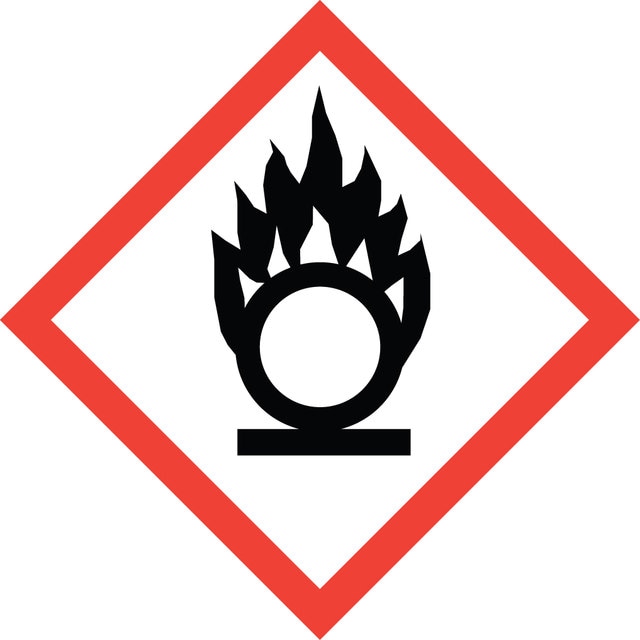Sign In to View Organizational & Contract Pricing
Select a Size
About This Item
Linear Formula:
(C6H5)2INO3
CAS Number:
Molecular Weight:
343.12
Beilstein:
3922747
EC Number:
MDL number:
UNSPSC Code:
12352300
PubChem Substance ID:
NACRES:
NA.23
Quality Level
mp
150-154 °C (lit.)
λmax
203 nm
226 nm (2nd)
SMILES string
[O-][N+]([O-])=O.[I+](c1ccccc1)c2ccccc2
InChI
1S/C12H10I.NO3/c1-3-7-11(8-4-1)13-12-9-5-2-6-10-12;2-1(3)4/h1-10H;/q+1;-1
InChI key
CQZCVYWWRJDZBO-UHFFFAOYSA-N
Looking for similar products? Visit Product Comparison Guide
Related Categories
General description
Diphenyliodonium nitrate (DPIN) is a photoacid generator (PAG) that goes through photolysis reaction which can be used in the lithographic formation of UV reactive polymers. It can also be used in forming a light tuned self-assembled polyelectrolytic structures.
Application
Cationic photoinitiator. Photoacid generator.
DIPN can be used in the photo patterning of UV tuned shape memory hydrogels which can potentially be used in 3D printing.
Signal Word
Danger
Hazard Statements
Precautionary Statements
Hazard Classifications
Ox. Sol. 2
Storage Class Code
5.1B - Oxidizing hazardous materials
WGK
WGK 3
Flash Point(F)
Not applicable
Flash Point(C)
Not applicable
Personal Protective Equipment
dust mask type N95 (US), Eyeshields, Gloves
Choose from one of the most recent versions:
Already Own This Product?
Find documentation for the products that you have recently purchased in the Document Library.
Xingyi Li et al.
Briefings in bioinformatics, 21(2), 566-583 (2019-02-19)
Genes that are thought to be critical for the survival of organisms or cells are called essential genes. The prediction of essential genes and their products (essential proteins) is of great value in exploring the mechanism of complex diseases, the
Alginate-graphene oxide hydrogels with enhanced ionic tunability and chemomechanical stability for light-directed 3D printing
Valentin TM, et al.
Carbon, 143, 447-456 (2019)
Dipeptide hydrogelation triggered via ultraviolet light
Raeburn J, et al.
Chemical Communications (Cambridge, England), 48(75), 9355-9357 (2012)
UV-controlled shape memory hydrogels triggered by photoacid generator
Feng W, et al.
Royal Society of Chemistry Advances, 5(100), 81784-81789 (2015)
Robin C Anderson et al.
Journal of food protection, 75(4), 758-761 (2012-04-11)
Food producing animals can be reservoirs of Campylobacter, a leading bacterial cause of human foodborne illness. Campylobacter spp. utilize amino acids as major carbon and energy substrates, a process that can be inhibited by thymol and diphenyliodonium chloride (DIC). To
Our team of scientists has experience in all areas of research including Life Science, Material Science, Chemical Synthesis, Chromatography, Analytical and many others.
Contact Technical Service